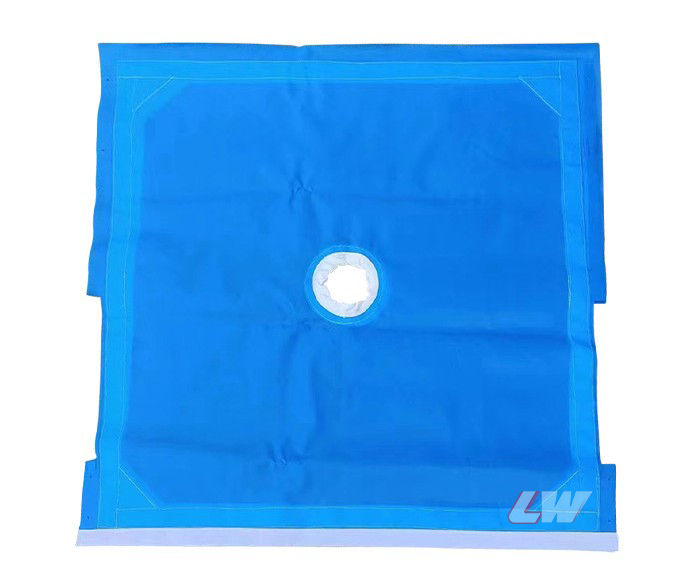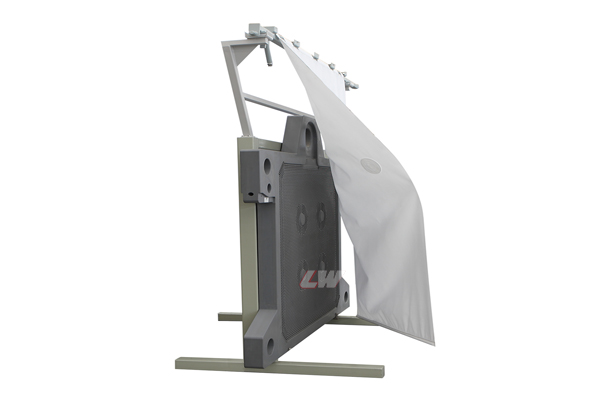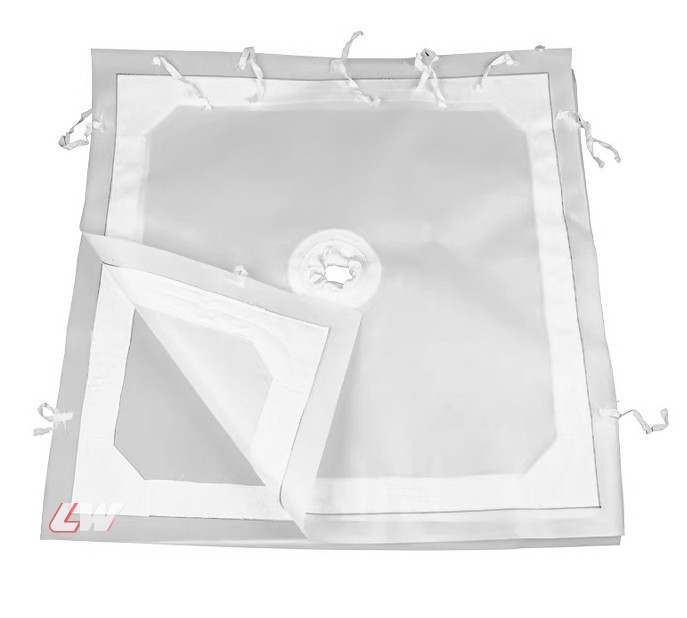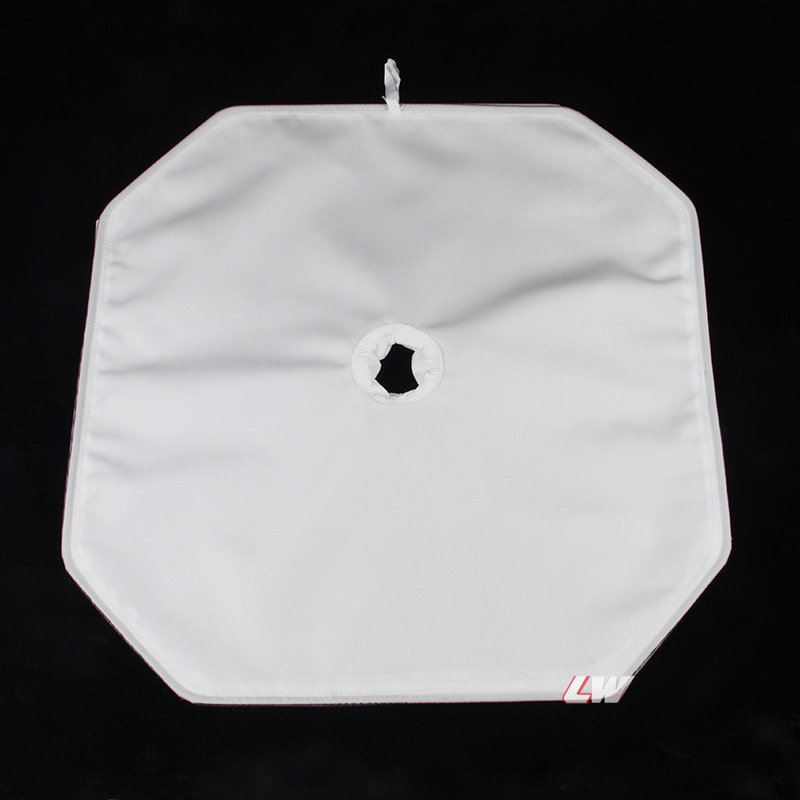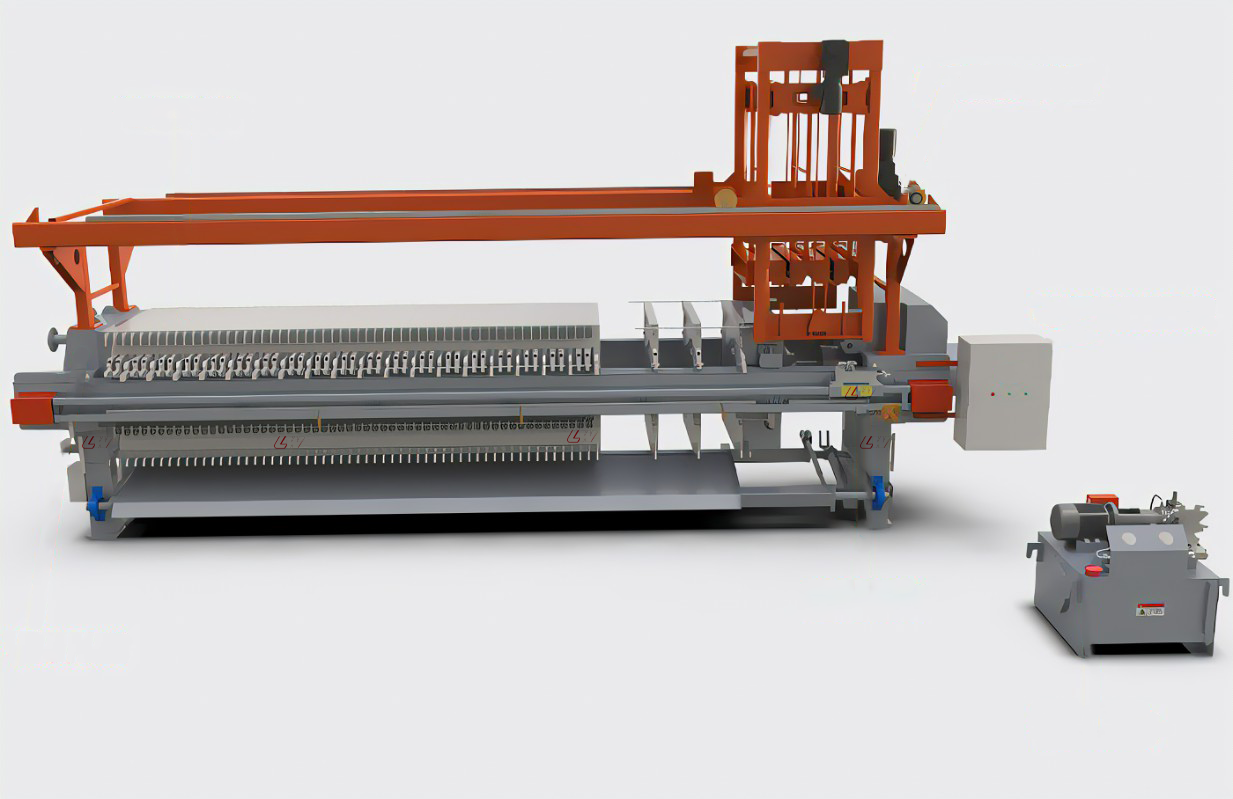Filter Cloths
Industrial Filter Cloths | Polypropylene, Polyester & Specialty Fabrics
Filter press cloths are essential components in solid-liquid separation processes across various industries. These specialized textiles serve as the primary filtration medium in filter press systems, allowing liquids to pass through while capturing solid particles. The proper selection of filter press cloths directly impacts operational efficiency, filtration quality, and equipment longevity.
Monofilament filter cloth is a high-performance filtration material widely used in various industries. It is known for its excellent filtration efficiency, breathability, durability, and easy maintenance.
Nylon filter cloth, also known as polyamide filter cloth, With its excellent alkali resistance, mild acid resistance, and outstanding mechanical strength, it is a preferred choice for various industries requiring efficient and durable filtration solutions.
Bonded filter cloth is a type of filter media that uses advanced adhesive bonding to ensure high filtration efficiency, minimal leakage, and improved operational safety.
It offers exceptional resistance to acids, weak alkalis, and high temperatures (up to 130°C). Its smooth surface, superior wear resistance, and excellent breathability make it a top choice for industries. With filtration precision as fine as 5 microns, it ensures optimal solid-liquid separation for diverse applications.
Polypropylene filter cloth is a type of synthetic fabric designed for high-performance filtration applications. Made from long fibers, this material is engineered to offer excellent chemical resistance and durability while ensuring high filtration precision. Its smooth surface and superior breathability make it ideal for filtering powders and other particulate matter.
Vilene filter cloth is a high-performance filtration material designed for demanding industrial environments. Renowned for its alkali resistance, low elongation, and excellent moisture absorption, it is a preferred choice for filter presses handling alkaline materials. With durability 1-2x longer than pure cotton and a temperature limit of <100°C, it ensures cost-effective, long-term filtration solutions.
Technology and Manufacturing Process
Precision Weaving
Using computer-controlled looms, our production process guarantees uniform weave patterns and consistent quality across every batch. This precision ensures that each cloth meets the exact specifications required for optimal filtration.
High-Quality Materials
We source premium-grade fibers such as polypropylene and polyester that provide excellent chemical resistance, tensile strength, and durability. These materials are chosen based on rigorous performance standards to ensure they withstand the demands of industrial applications.
Innovative Coating Technologies
In some product lines, we apply specialized coatings that enhance the cloth’s resistance to clogging and improve its overall filtration performance. These coatings also contribute to easier cleaning and longer life cycles.
Quality Control and Testing
Every filter press cloth undergoes strict quality control measures and testing to ensure it meets international standards. Parameters such as mesh size, permeability, and mechanical strength are continuously monitored to guarantee reliability.
Types of Filter Press Cloths
These cloths are made from single strands of synthetic fibers (imagine fishing line) woven together into a precise pattern. Each fiber is a single, continuous filament.
Structure: The weaving creates a smooth, uniform surface with very consistent openings between the threads. Think of it like a fine mesh screen with extremely precise spacing.
Key advantages:
- Cake release: The smooth surface prevents particles from embedding deeply, making it easier to remove the filter cake
- Resistance to blinding: Because particles don’t penetrate deeply, these cloths are less likely to become clogged
- Cleaning: The smooth surface allows for easier washing and maintenance
- Moisture retention: They hold less liquid within the cloth structure itself
Applications: These are ideal when you need a clean product discharge or when dealing with crystalline materials that would easily separate from the smooth surface. Industries like pharmaceutical processing often prefer these for cleanliness and precision.
Unlike monofilament cloths, these are made from bundles of many tiny fibers twisted together to form thicker yarns before weaving.
Structure: The yarn bundles create a more textured surface with greater depth. The spaces between yarns are less uniform, but the cloth has more physical strength.
Key advantages:
- Strength: The multiple fiber construction provides superior tensile strength
- Particle capture: The complex yarn structure can trap smaller particles than monofilament
- Abrasion resistance: The multiple fibers distribute wear more effectively
- Conformability: These cloths adapt better to plate surface irregularities, improving sealing
Applications: These excel in demanding physical environments with abrasive slurries or high-pressure applications. Mining, metallurgy, and heavy industrial processes often use these cloths where durability is critical.
These are non-woven materials created through a mechanical process where fibers are entangled using barbed needles.
Structure: Rather than a woven pattern, these have a dense, three-dimensional matrix of interlocked fibers creating a thick, sponge-like structure.
Key advantages:
- Depth filtration: Particles are captured throughout the thickness, not just at the surface
- Higher capacity: Can hold more solids within its structure before requiring cleaning
- Versatility: Available in various thicknesses and densities for different applications
- Chemical resistance options: Can be manufactured from specialized fibers for aggressive environments
Applications: These excel in wastewater treatment, chemical processing, and applications requiring fine particle removal. They’re particularly valuable when filtrate clarity is important or when dealing with difficult-to-filter slurries.
These are hybrid designs consisting of a base cloth (often needle felt or woven cloth) with a thin microporous membrane laminated to the surface.
Structure: The membrane layer has extremely fine, precisely-sized pores that provide surface filtration while the base cloth provides mechanical support.
Key advantages:
- Superior clarity: The membrane layer can remove extremely fine particles
- Excellent cake release: The smooth membrane surface prevents particle embedding
- Reduced blinding: Particles remain on the surface rather than penetrating the cloth
- Longer lifespan: The membrane protects the base cloth from wear and contamination
Applications: These are premium options used in high-purity applications like pharmaceutical production, fine chemicals, and food processing where product quality and filtrate clarity are critical.
At Loway Equipment, we’re committed to helping you optimize your processes with reliable and efficient filter press solutions.
Contact us today to learn more about how our filter presses can help improve your operations’ efficiency, productivity, and sustainability.
Filter Press Cloth Materials
Properties:
- Temperature Resistance: Up to 90°C
- Chemical Compatibility: Excellent resistance to acids, alkalis, and organic solvents
- Mechanical Properties: Good strength, moderate abrasion resistance
- Cost Efficiency: Economical option for many applications
Best Used For:
- General chemical processing
- Electroplating waste
- Wastewater treatment
- Food processing
Properties:
- Temperature Resistance: Up to 150°C
- Chemical Compatibility: Good resistance to weak acids, excellent resistance to organic solvents
- Mechanical Properties: Excellent tensile strength and dimensional stability
- Abrasion Resistance: Superior to polypropylene
Best Used For:
- Higher temperature applications
- Mining and mineral processing
- Industrial wastewater with abrasive components
- Applications requiring high mechanical strength
Nylon (Polyamide)
Properties:
- Temperature Resistance: Up to 120°C
- Chemical Compatibility: Excellent resistance to alkalis, limited resistance to acids
- Mechanical Properties: Outstanding abrasion resistance and flexibility
- Moisture Absorption: Higher than PP and PET
Best Used For:
- Alkaline slurries
- Abrasive mineral slurries
- Applications requiring flexibility and durability
- Food processing where FDA compliance is required
Properties:
- Temperature Resistance: Up to 260°C
- Chemical Compatibility: Exceptional resistance to almost all chemicals
- Mechanical Properties: Moderate strength, excellent non-stick properties
- Cost Efficiency: Premium option with highest cost
Best Used For:
- Highly corrosive environments
- High-temperature applications
- Pharmaceutical and ultra-pure applications
- Sticky or difficult-to-release filter cakes
- Temperature resistance up to 200°C
- Excellent mechanical strength
- Superior abrasion resistance
- Ideal for harsh industrial environments
PPS (Polyphenylene Sulfide):
- Temperature resistance up to 180°C
- Outstanding chemical resistance
- Good dimensional stability
- Suitable for aggressive chemical environments
Advanced Filter Cloth Technologies
Surface Treatments and Finishes
Calendering
The process of pressing cloth through heated rollers to achieve a smoother surface.
- Benefits: Improved cake release, reduced cloth blinding, enhanced filtrate clarity
- Applications: Fine chemical processing, pharmaceuticals
Heat Setting
Thermal treatment to stabilize synthetic fibers and reduce shrinkage.
- Benefits: Improved dimensional stability, prolonged cloth life
- Applications: High-temperature filtration applications
Singeing
Controlled burning of surface fibers to create a smoother surface.
- Benefits: Reduced particle entrapment, better cake release
- Applications: Food processing, pharmaceutical production
Hydrophobic/Hydrophilic Treatments
Chemical treatments to modify the cloth’s interaction with water.
- Benefits: Tailored performance for specific applications
- Applications: Oil/water separation, specialty chemical processing
Edge Treatment Technologies
Heat-Sealed Edges
Thermal fusion of cloth edges to prevent fraying and leakage.
- Benefits: Extended cloth life, reduced contamination
- Applications: High-purity applications, food grade processing
Reinforced Edges
Additional material or stitching along cloth edges to enhance durability.
- Benefits: Increased mechanical strength, improved handling
- Applications: High-pressure applications, abrasive slurries
Grommeting and Custom Hole Patterns
Precision-placed metal or plastic reinforcements around mounting holes.
- Benefits: Proper alignment, reduced tearing at attachment points
- Applications: Custom filter press configurations, automated systems
Filter Press Applications Across Industries
Common Questions
Have More Questions? Our technical team is ready to provide detailed, personalized guidance.
Q1: How often should filter press cloths be replaced?
Replacement frequency varies significantly based on application, operating conditions, and maintenance practices. Typical lifespans range from 100-500 cycles for standard applications, while some specialty applications may require more frequent replacement. Establish a monitoring program that tracks performance metrics to determine the optimal replacement schedule for your specific operation.
Q2: Can filter press cloths be cleaned and reused?
Yes, most filter press cloths are designed for multiple use cycles with proper cleaning. The cleaning method should be tailored to the specific contaminants and cloth material. Regular maintenance cleaning extends cloth life and maintains optimal performance. However, some applications with highly hazardous materials may require single-use protocols.
Q3: How do I know if I'm using the right filter cloth for my application?
The right cloth should provide acceptable filtrate clarity, reasonable cycle times, appropriate cake moisture content, and adequate service life. If you’re experiencing issues in any of these areas, it may indicate that your cloth selection could be optimized. Consider conducting a pilot test with alternative cloth types to compare performance.
Q4: What causes premature filter cloth failure?
Common causes include chemical incompatibility, excessive operating pressure, mechanical damage during handling, improper installation, inadequate cleaning, and abrasive wear from sharp particles. Identifying the specific failure mode through examination of used cloths can help determine the appropriate corrective action.
Q5: How can I improve cake release from my filter cloths?
Consider these approaches: (1) Select cloths with better release properties such as monofilament or membrane-coated varieties, (2) Ensure proper cloth tensioning during installation, (3) Optimize the final squeeze pressure and time in your cycle, (4) Evaluate whether a chemical additive to your slurry might improve release characteristics, (5) Consider surface treatments or finishes for your existing cloths.
Q6: How does temperature affect filter cloth performance?
Temperature impacts several aspects of cloth performance including dimensional stability, tensile strength, chemical resistance, and cake formation characteristics. Most synthetic filter cloths have specific maximum operating temperature limits beyond which permanent damage occurs. Additionally, higher temperatures may accelerate chemical degradation processes even when below the maximum temperature limit.
Q7: What is the relationship between cloth permeability and filtration performance?
Cloth permeability (measured in m³/m²/h or similar units) directly influences flow rate and pressure drop across the cloth. Higher permeability generally allows faster filtration but may reduce particle retention efficiency. The optimal permeability represents a balance between flow rate and filtration quality. As filtration progresses, cake formation becomes the primary flow resistance rather than the cloth itself.
Q8: Q: How do I calculate the proper size and number of filter cloths needed for my filter press?
The calculation depends on your filter press dimensions and configuration. Measure your plate dimensions and count the number of chambers in your press. For standard recessed chamber presses, you’ll need one cloth per chamber plus one. Always verify measurements and consult with your filter press manufacturer for specific requirements for your equipment model.
Q9: How Can I Improve Filter Press Equipment Efficiency?
Efficiency improvement strategies:
Regular preventative maintenance
Proper cloth selection
Optimal pressure management
Consistent feed quality
Advanced automation
Periodic performance audits
Q10: What is blinding and how can it be prevented?
Blinding occurs when particles become embedded within or on the cloth structure, reducing permeability and flow rate. Prevention strategies include: (1) Selecting the appropriate cloth type for your particle characteristics, (2) Implementing regular and effective cleaning procedures, (3) Considering precoat filtration techniques, (4) Evaluating process modifications to change particle characteristics, and (5) Using surface-treated cloths with enhanced anti-blinding properties.


